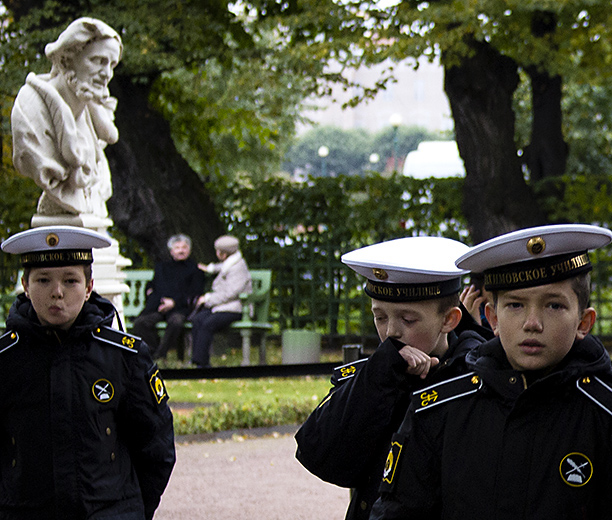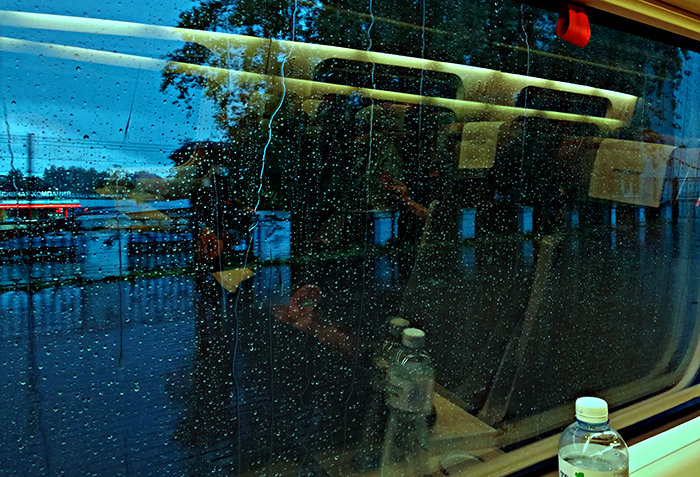Hello friends! This time a very short trip to Saint Petersburg (Leningrad, for the nostalgic) and Finland. Unfortunately, after a couple of days my camera stopped working, maybe for taking too much rain, so I didn’t take many photos. I took some pics with mobile after.
Anyway, let’s see them.
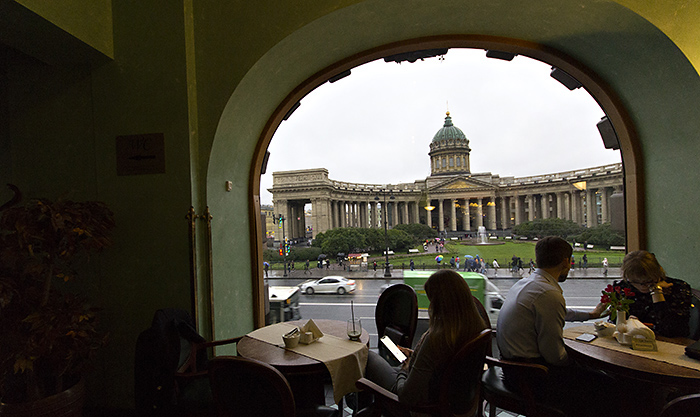 In a coffee. Behind the window, the Kazan Cathedral. Saint Petersburg is a majestic city, with broad avenues and huge buildings.
In a coffee. Behind the window, the Kazan Cathedral. Saint Petersburg is a majestic city, with broad avenues and huge buildings.
Founded in 1703 in a marshy and inhospitable area, as a military and commercial outpost on the Baltic Sea, it expanded in a few years at the request of the tsar Peter the Great, who for its construction brought together serfs and workers from all over Russia. At least 30,000 workers died in those years due to terrible working conditions.
The city took on a European, modern, imperial aspect, and the Russian aristocracy soon began to prefer it to old Moscow. Already in 1712 it became the new capital. It will remain until 1918.
In 1914, at the outbreak of World War I, the name was changed to Petrograd, because St. Petersburg sounded too German. In 1924, a few days after Lenin’s death, the name was changed again, this time to Leningrad. In 1991, following a referendum, it took back the old name, St. Petersburg.
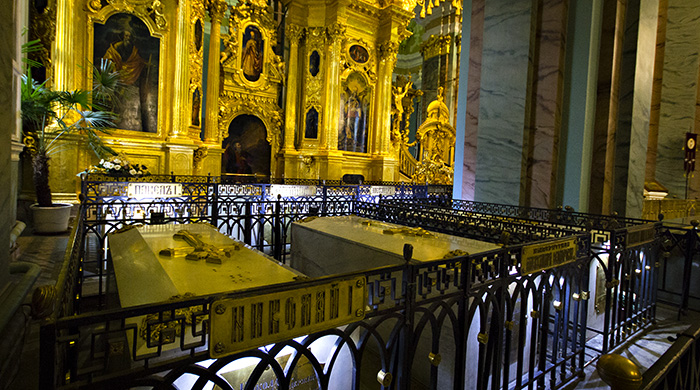 Inside the cathedral in the fortress of Peter and Paul, the place of the first settlement. Almost all of the tsars following the founding of the city are buried in this cathedral.
Inside the cathedral in the fortress of Peter and Paul, the place of the first settlement. Almost all of the tsars following the founding of the city are buried in this cathedral.
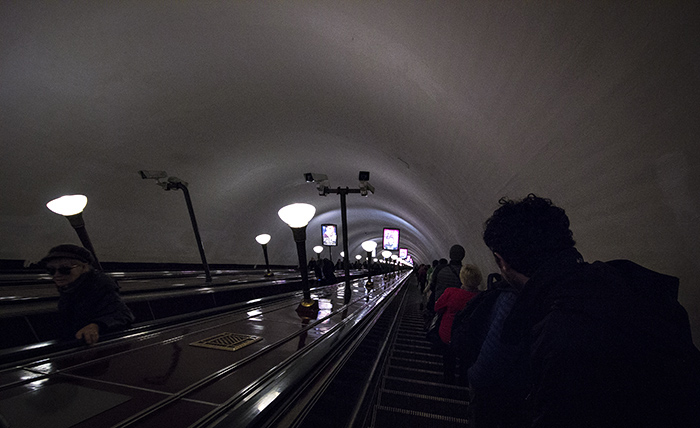 Some metro stations are so deep that seems like a descent into the underworld. They are very elegant.
Some metro stations are so deep that seems like a descent into the underworld. They are very elegant.
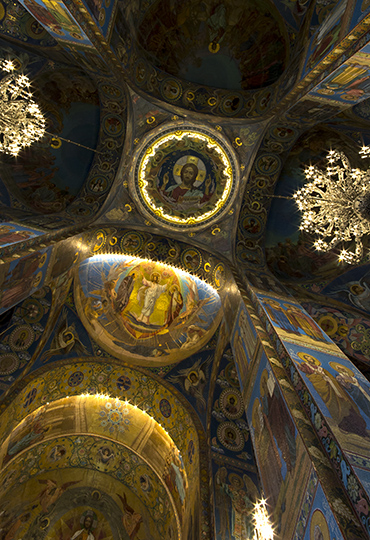 Mosaics on the ceiling of the Church of the Savior on Spilled Blood, so called because it was founded in the place where, in 1881, the tsar Alexander II was assassinated by the revolutionary group, of anarchist and socialist tendencies, “Narodnaja Volja” (“People’s Will”). From the nineteenth century to the 1917 revolution, St. Petersburg was a crossroads of fervent philosophical and political disquisitions, as evidenced for example by Dostoevsky’s novels, which contributed to the flourishing of countless revolutionary groups.
Mosaics on the ceiling of the Church of the Savior on Spilled Blood, so called because it was founded in the place where, in 1881, the tsar Alexander II was assassinated by the revolutionary group, of anarchist and socialist tendencies, “Narodnaja Volja” (“People’s Will”). From the nineteenth century to the 1917 revolution, St. Petersburg was a crossroads of fervent philosophical and political disquisitions, as evidenced for example by Dostoevsky’s novels, which contributed to the flourishing of countless revolutionary groups.
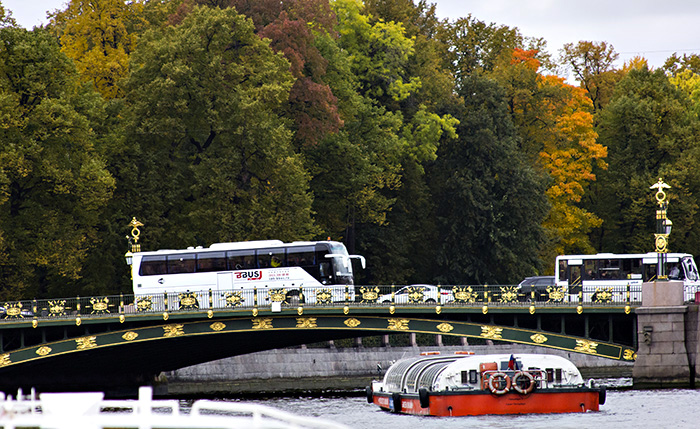 Autumn trees stand out behind one of the city’s 340 bridges.
Autumn trees stand out behind one of the city’s 340 bridges.
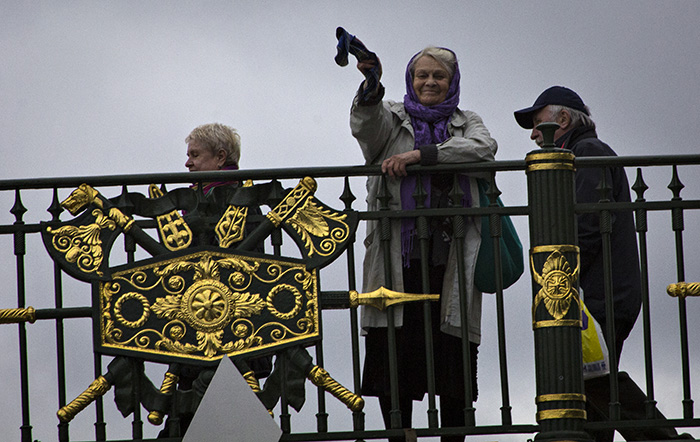 An old woman greets me from a bridge under which our boat was passing. But after she spat! (I’m joking
An old woman greets me from a bridge under which our boat was passing. But after she spat! (I’m joking ![]() )
)
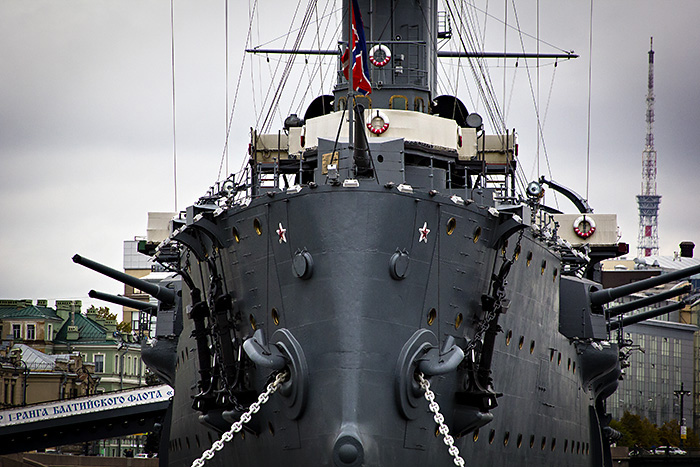 The crusier Aurora. One of those cannons fired the blank shot as signal to the various Bolshevik groups scattered around the city to start the October revolution.
The crusier Aurora. One of those cannons fired the blank shot as signal to the various Bolshevik groups scattered around the city to start the October revolution.
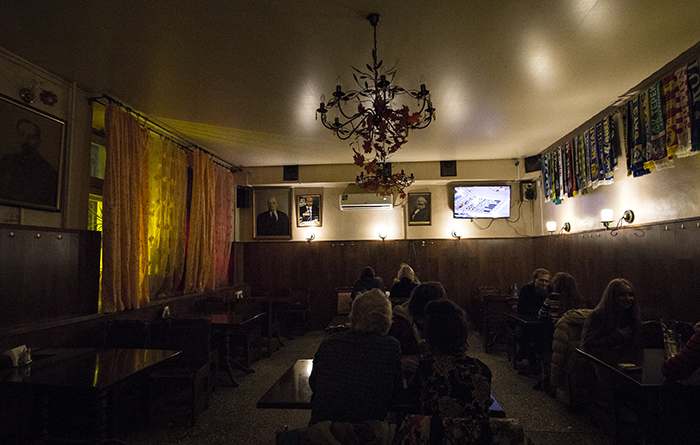 One of the few locals that has remained as it was from Soviet times, when workers used to come to drink a few glasses of vodka. On the wall, there are still portraits of Lenin and Marx.
One of the few locals that has remained as it was from Soviet times, when workers used to come to drink a few glasses of vodka. On the wall, there are still portraits of Lenin and Marx.
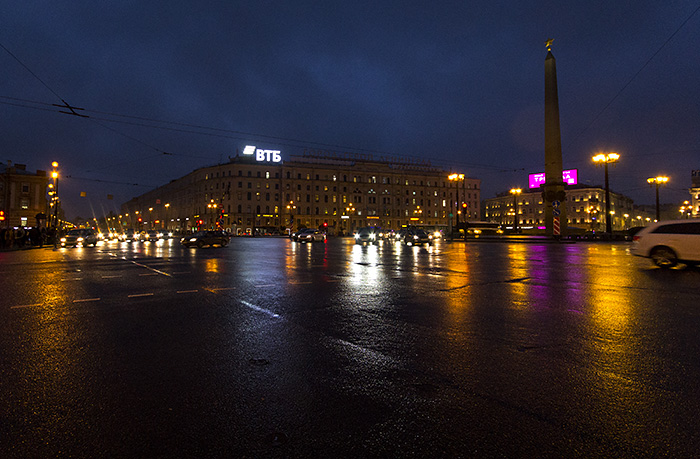 At dusk. As I said, it is a very spacious city, with wide avenues.
At dusk. As I said, it is a very spacious city, with wide avenues.
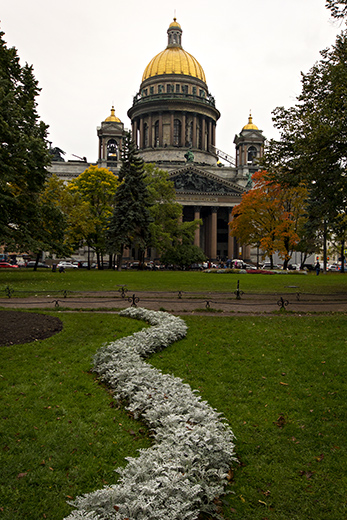 St. Isaac’s Cathedral, one of the largest Orthodox churches in the world.
St. Isaac’s Cathedral, one of the largest Orthodox churches in the world.
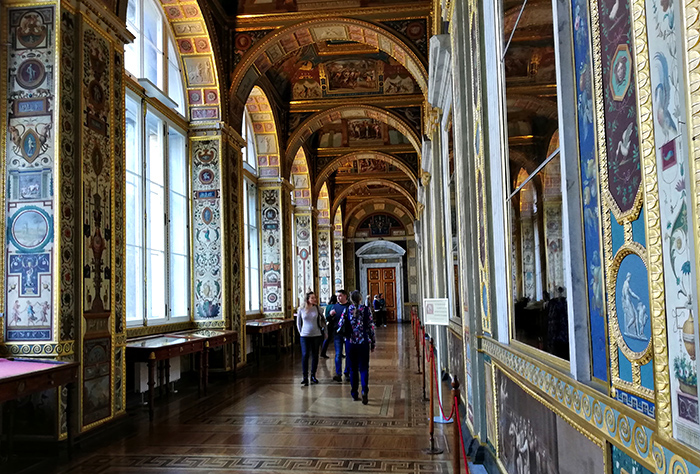 Inside the Hermitage, one of the largest and most extraordinary museums in the world, perhaps the most elegant. It is located in the Winter Palace complex, the former palace of the tsars, among splendid rooms like this. Its name comes from the fact that paradoxically at the beginning it was born as a small place in which Catherine II wanted to stay sometimes by herself, in peace from the court pomp and just surrounded by some work of art. Year after year the art collection expanded immensely, until including all the greatest European artists.
Inside the Hermitage, one of the largest and most extraordinary museums in the world, perhaps the most elegant. It is located in the Winter Palace complex, the former palace of the tsars, among splendid rooms like this. Its name comes from the fact that paradoxically at the beginning it was born as a small place in which Catherine II wanted to stay sometimes by herself, in peace from the court pomp and just surrounded by some work of art. Year after year the art collection expanded immensely, until including all the greatest European artists.
Photo taken with the mobile, because as I said, the camera stopped working from now on.
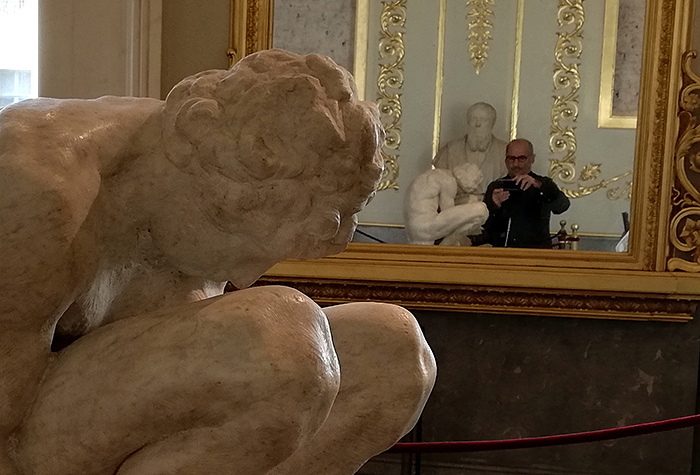 And as you can see there is also Dekaro exposed at the Hermitage! On the left, instead, a modest sculpture by Michelangelo, moreover unfinished.
And as you can see there is also Dekaro exposed at the Hermitage! On the left, instead, a modest sculpture by Michelangelo, moreover unfinished.
On a frigid and stormy morning we took the train to Helsinki from a station that is famous because there, in April 1917, returned from Europe Lenin, after 10 years since the last time he had fled.
He was welcomed by many people, testifying to the fact that the small faction of the Bolsheviks was gaining more and more support among the population. A few days later Lenin exposed the “April Theses”, with the famous “all power to the soviets”, in which he proposed the definitive break with the bourgeois, capitalist, aristocratic and reactionary forces of the current provisional government born of the revolution of February (the soviets were the workers’ councils, later including also peasants and soldiers, and were part of the provisional government). He asked also for the immediate exit from the “predatory imperialist war”. The further worsening of the Russian situation in the following months due to the absurd First World War brought most of the popular consensus towards the Bolsheviks who in October felt ready to take power.
For the full story of the revolution, I suggest to see one the great masterpieces of Eisenstein: October.
I did instead the reverse path. From St. Petersburg I arrived in Helsinki, where I exposed the “October Theses”, in which, synthesizing, I say: capitalism won, let’s give up and let’s watch football in tv. Ehhhhh … I’m kidding !! Nothing could be more false, indeed. Despite what they want us to believe, I see around more and more a great desire to fight against this disgusting system in a constructive way, especially since now is at stake the survival of the entire planet. And in fact, as I write right now, rebellions are igniting the streets of Chile, Ecuador, Catalonia, Lebanon, Hong Kong, etc. … etc …
The point is to converge our heterogeneous forces against the true common enemy: capitalism, especially in its most blood-sucker form: the international finance.
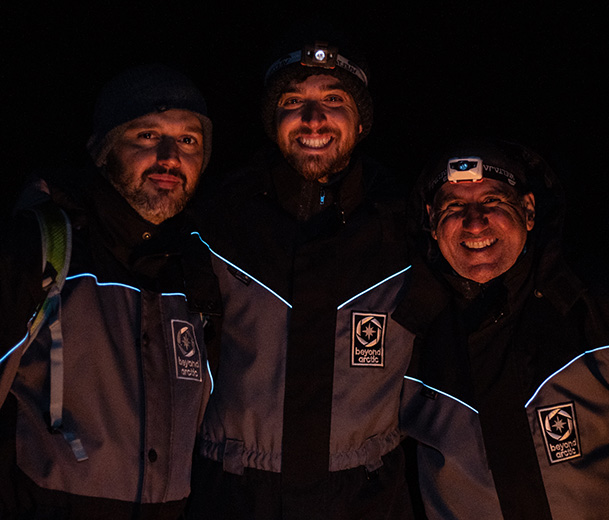 And here we are! You saw already Giamma in a couple of posts. About Riccardo, is now a regular guest of Dekaro Diary.
And here we are! You saw already Giamma in a couple of posts. About Riccardo, is now a regular guest of Dekaro Diary.
We were in Lapland, in northern Finland, on the parallel that marks the Arctic Circle, on a tour where we hoped to see the Northern Lights. But unfortunately we didn’t see them because, although it seems there was activity, the sky was covered with clouds.
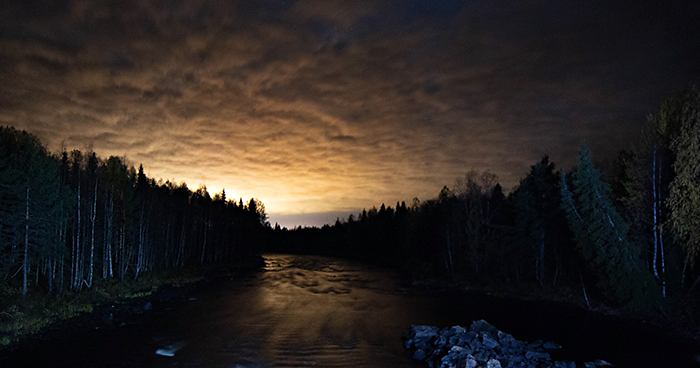 I took this photo with a camera and a tripod kindly lent by the tour organizers, over a bridge where we stopped to take pictures. Even if appears a light in the background, we were completely in the dark.
I took this photo with a camera and a tripod kindly lent by the tour organizers, over a bridge where we stopped to take pictures. Even if appears a light in the background, we were completely in the dark.
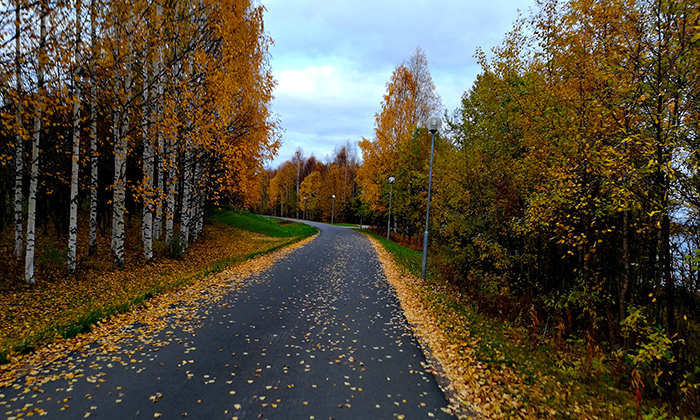 Again with mobile’s camera, an autumn road in Rovaniemi, the capital of Lapland. The city is also known for stealing the birthplace of Santa Claus, who instead is, as we know, Turkish.
Again with mobile’s camera, an autumn road in Rovaniemi, the capital of Lapland. The city is also known for stealing the birthplace of Santa Claus, who instead is, as we know, Turkish.
 And in the end Helsinki, capital and largest city of Finland, with 650,000 inhabitants of the approximately 5.5 million Finns.
And in the end Helsinki, capital and largest city of Finland, with 650,000 inhabitants of the approximately 5.5 million Finns.
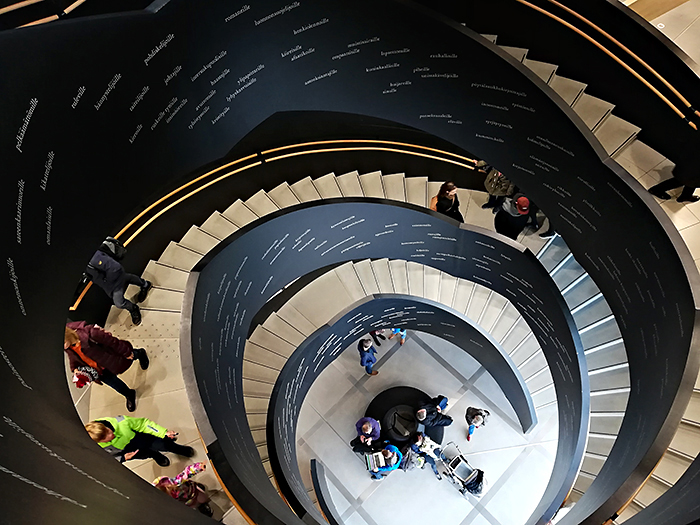 Internal staircase of the splendid Helsinki public library. As you see, it’s not really necessary to have expansive cameras to take interesting photos. It is just necessary that bit of intuition, artistic glance, creativity, aesthetic sense and experience.
Internal staircase of the splendid Helsinki public library. As you see, it’s not really necessary to have expansive cameras to take interesting photos. It is just necessary that bit of intuition, artistic glance, creativity, aesthetic sense and experience.
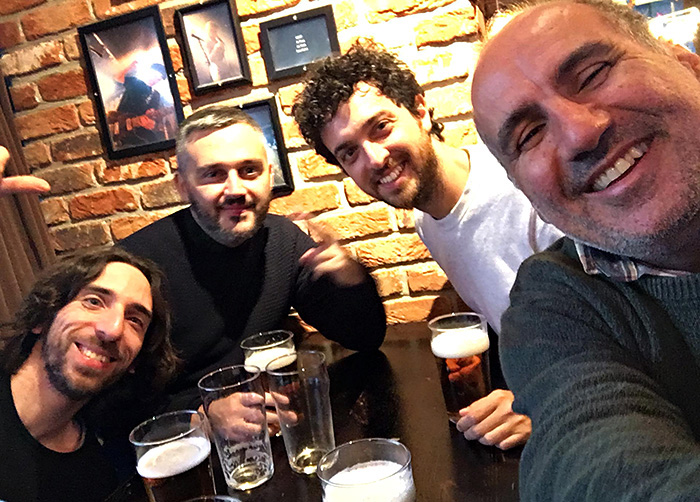 Lastly, a group selfie where there is also Antonino, a Sicilian friend who was working in Malta and now has moved to Helsinki with the Finnish girlfriend, in this eternal precarious diaspora of us young, and not anymore young, Italians.
Lastly, a group selfie where there is also Antonino, a Sicilian friend who was working in Malta and now has moved to Helsinki with the Finnish girlfriend, in this eternal precarious diaspora of us young, and not anymore young, Italians.
All power to the soviets!






















































